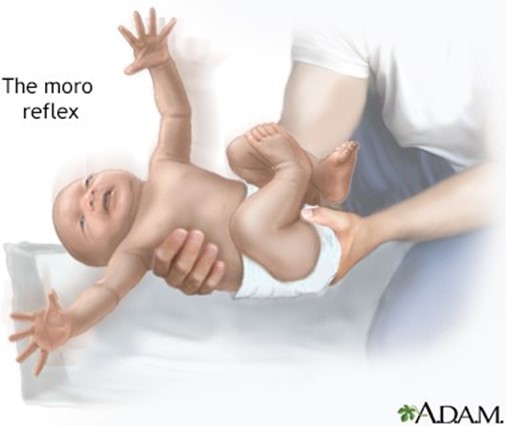A nurse is caring for a newborn who is at 34 weeks of gestation, weighs 1,550 g, and has nasal flaring, intercostal retractions, expiratory grunting, and mild cyanosis. The nurse should place the newborn in an incubator for which of the following reasons?
The newborn's temperature control mechanism is immature.
Heat increases the flow of oxygen to the newborn's extremities.
The newborn has a small body surface for his weight.
Heat facilitates the drainage of mucus for a premature newborn.
The Correct Answer is A
Choice A rationale:
Placing the newborn in an incubator is essential because the newborn's temperature control mechanism is immature. Premature infants have an underdeveloped thermoregulatory system, making them susceptible to heat loss and cold stress. An incubator provides a controlled, warm environment to maintain the newborn's body temperature within the normal range (around 36.5°C to 37.5°C or 97.7°F to 99.5°F).
Choice B rationale:
Heat increasing the flow of oxygen to the newborn's extremities is not a valid reason for placing the newborn in an incubator. Oxygenation is primarily influenced by respiratory and circulatory mechanisms, not external heat.
Choice C rationale:
The newborn's small body surface area for his weight is not directly related to the need for an incubator. Premature infants have a higher surface area to weight ratio, making them more prone to heat loss, but this is not the primary reason for using an incubator.
Choice D rationale:
Heat facilitating the drainage of mucus is not a reason for placing the newborn in an incubator. Proper positioning and suctioning are used to manage mucus in premature infants, but incubators are primarily for temperature regulation.
Nursing Test Bank
Naxlex Comprehensive Predictor Exams
Related Questions
Correct Answer is A
Explanation
Choice A rationale:
The correct guidance includes giving the newborn sponge baths until the cord stump falls off, which helps to keep the area dry. It is essential to keep the umbilical cord stump clean and dry to prevent infection. Submerging the cord stump in water could increase the risk of infection.
Choice B rationale:
Covering the cord with the diaper is not advisable. The diaper could trap moisture around the cord stump, leading to a higher risk of infection. The cord stump should be exposed to air as much as possible to aid in drying and healing.
Choice C rationale:
Washing the cord with mild soap and water is not necessary and could introduce moisture, which should be avoided. Instead, the stump should be cleaned gently with a soft, dry cloth if it gets dirty.
Choice D rationale:
Wrapping the cord in petroleum jelly gauze is not a recommended practice. Applying petroleum jelly or other substances to the cord stump can interfere with the drying process and increase the risk of bacterial growth, leading to infection.
Correct Answer is ["A"]
Explanation
Choice A rationale:

The Moro reflex is a normal finding in newborns, including those born post-term. It is a primitive reflex that should be present and indicates a healthy neurological system.
Choice B rationale:
Vernix, a protective white substance that coats the skin in utero, is typically absent or minimal in post-term newborns due to its decreased production as gestation progresses. Therefore, it would not be expected in a post-term infant.
Choice C rationale:
Lanugo, the fine hair covering a newborn's body, is usually present in greater amounts in preterm infants. By the time a newborn is post-term, lanugo is typically sparse or absent, making it an unlikely finding.
Choice D rationale:
This maneuver assesses the flexibility of the newborn's joints. Post-term infants tend to have reduced flexibility and increased muscle tone, making this maneuver more difficult or restricted in this population.
Whether you are a student looking to ace your exams or a practicing nurse seeking to enhance your expertise , our nursing education contents will empower you with the confidence and competence to make a difference in the lives of patients and become a respected leader in the healthcare field.
Visit Naxlex, invest in your future and unlock endless possibilities with our unparalleled nursing education contents today
Report Wrong Answer on the Current Question
Do you disagree with the answer? If yes, what is your expected answer? Explain.
Kindly be descriptive with the issue you are facing.
